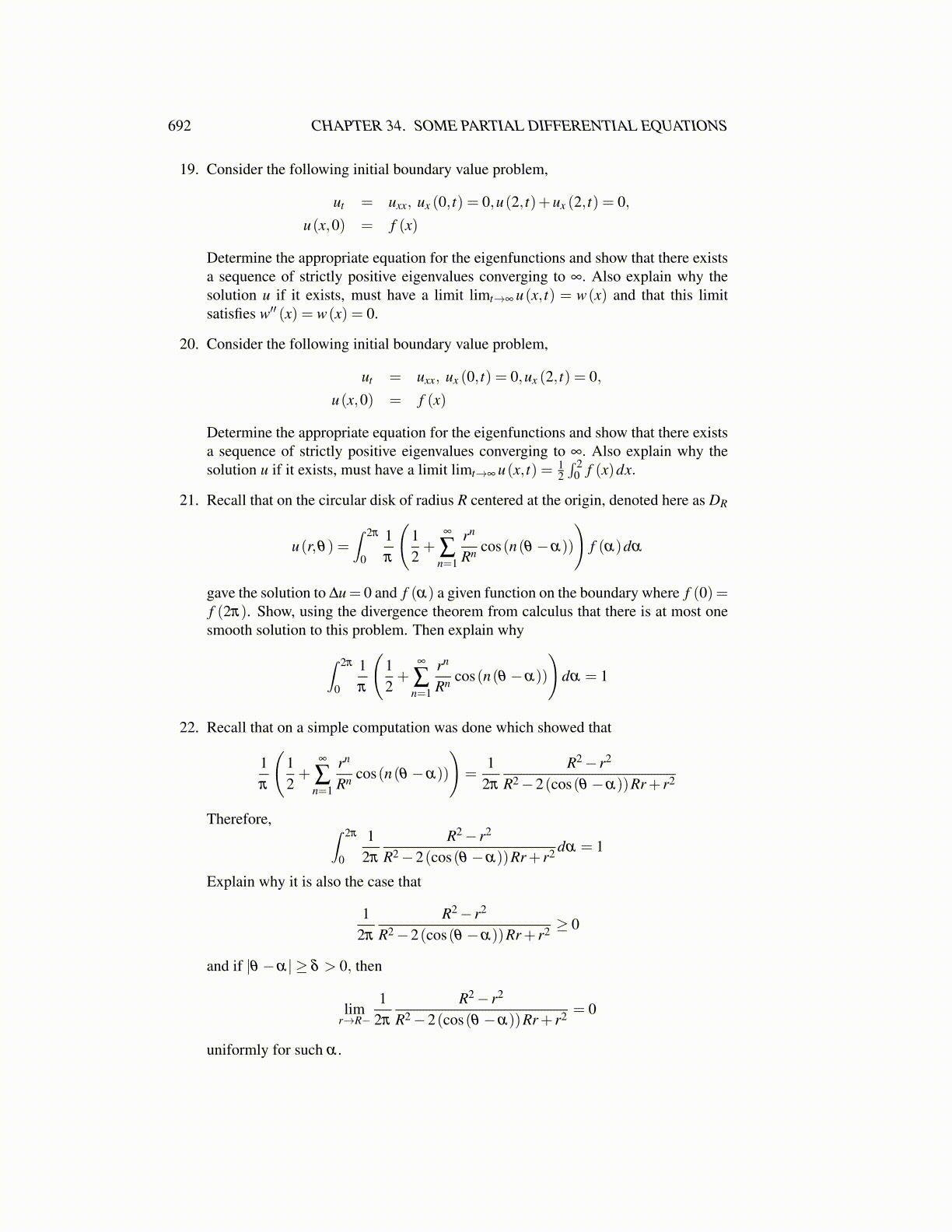
692 CHAPTER 34. SOME PARTIAL DIFFERENTIAL EQUATIONS
19. Consider the following initial boundary value problem,
ut = uxx, ux (0, t) = 0,u(2, t)+ux (2, t) = 0,u(x,0) = f (x)
Determine the appropriate equation for the eigenfunctions and show that there existsa sequence of strictly positive eigenvalues converging to ∞. Also explain why thesolution u if it exists, must have a limit limt→∞ u(x, t) = w(x) and that this limitsatisfies w′′ (x) = w(x) = 0.
20. Consider the following initial boundary value problem,
ut = uxx, ux (0, t) = 0,ux (2, t) = 0,u(x,0) = f (x)
Determine the appropriate equation for the eigenfunctions and show that there existsa sequence of strictly positive eigenvalues converging to ∞. Also explain why thesolution u if it exists, must have a limit limt→∞ u(x, t) = 1
2∫ 2
0 f (x)dx.
21. Recall that on the circular disk of radius R centered at the origin, denoted here as DR
u(r,θ) =∫ 2π
0
1π
(12+
∞
∑n=1
rn
Rn cos(n(θ −α))
)f (α)dα
gave the solution to ∆u= 0 and f (α) a given function on the boundary where f (0) =f (2π). Show, using the divergence theorem from calculus that there is at most onesmooth solution to this problem. Then explain why
∫ 2π
0
1π
(12+
∞
∑n=1
rn
Rn cos(n(θ −α))
)dα = 1
22. Recall that on a simple computation was done which showed that
1π
(12+
∞
∑n=1
rn
Rn cos(n(θ −α))
)=
12π
R2− r2
R2−2(cos(θ −α))Rr+ r2
Therefore, ∫ 2π
0
12π
R2− r2
R2−2(cos(θ −α))Rr+ r2 dα = 1
Explain why it is also the case that
12π
R2− r2
R2−2(cos(θ −α))Rr+ r2 ≥ 0
and if |θ −α| ≥ δ > 0, then
limr→R−
12π
R2− r2
R2−2(cos(θ −α))Rr+ r2 = 0
uniformly for such α .